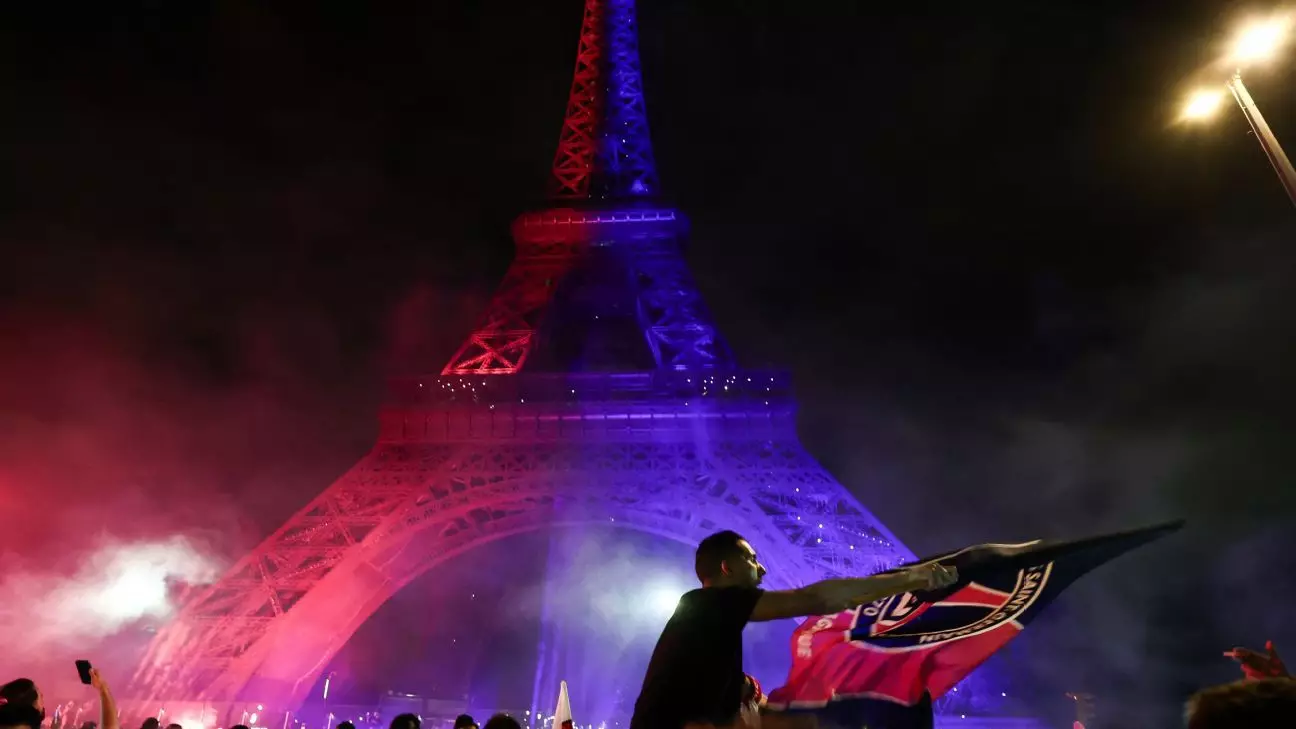Paris Saint-Germain (PSG) has etched its name into football history with a dazzling triumph. After a long, obsessive pursuit of glory, the team finally claimed its first Champions League title, annihilating Inter Milan with a commanding 5-0 scoreline. This victory should have symbolized a euphoric uprising for supporters, many of whom dreamed of this moment for years. The Eiffel Tower, adorned in PSG’s colors, stood as a beacon of hope and celebration, while scenes across the city reflected joyous gatherings. However, as is often the case in large-scale festivities, the unbridled excitement quickly twisted into tragedy, highlighting a complex narrative of celebration gone awry.
A Dark Turn
The celebrations, although initially serene and celebratory, confronted a disheartening reality when violence erupted in several regions. Amid the joyous atmosphere, the night took a somber turn as two fans lost their lives, overshadowing a historic day for the club. A 17-year-old was fatally stabbed in Dax, while a man in his 20s met a tragic end in Paris under horrifying circumstances—his scooter struck by a car amid the frenzy of jubilation. These incidents underscored a grim truth: the fine line between revelry and chaos can often be perilously thin.
The Cost of Elevation
In addition to the fatalities, a police officer found himself in an artificial coma after sustaining grave injuries from fireworks during a street gathering in Coutances. This harrowing injury reflects the reckless abandon of some celebratory actions. Injuries around Paris soared to 192, with serious conditions reported for four individuals. It seems that the nation’s passion for football and the deep-rooted devotion to PSG can sometimes manifest in a destructive manner, leading individuals to prioritize an unhinged celebration over their own safety and the wellbeing of others.
Navigating the Aftermath
As Paris prepared for a grand victory parade, authorities braced themselves for potential unrest. The Champs-Élysées, typically a vibrant thoroughfare, was transformed into a restricted zone, with an extensive deployment of police anticipated to manage anticipated large crowds. The tactical response echoed strategies from previous turbulent celebrations, such as the celebratory chaos following France’s World Cup win in 2018. The haunting memories of such moments linger, reminding us of the burgeoning tension that can arise at the intersection of elation and lawlessness.
Glimpses of Joy Amid Chaos
Yet, not all scenes reflected despair. In places like the Place de la Bastille, thousands of fans reveled joyously, showcasing the spirited fervor associated with PSG pride—from singing anthems to exuberantly climbing the column. Motorbikes zipped around, and the energy was intoxicating, capturing the essence of what football can truly mean to its supporters. Moments like these illuminate the sheer beauty of community bonding, energizing a city with a collective spirit that transcends the mundane.
Blame and Responsibility
Paris police chief Laurent Nunez’s assertion regarding the violence—attributing it to “thousands of people who came to commit acts of violence” rather than to celebrate—invites scrutiny. While it is undeniable that there are those who seek to exploit such gatherings for chaos, we must also examine the breach between fervent celebration and violent outbursts. It raises questions about crowd management, the culture surrounding such victorious celebrations, and how to foster an environment that celebrates passion without descending into disorder.
Ultimately, the dichotomy of the PSG Champions League victory—marked by both jubilance and tragedy—reveals the complexities inherent in monumental sporting events. As we celebrate achievements, it is crucial to recognize the shadows they cast and to strive for a future where elation is celebrated safely and inclusively, turning tragedies into lessons that shape a more respectful and responsible celebratory culture.


Leave a Reply